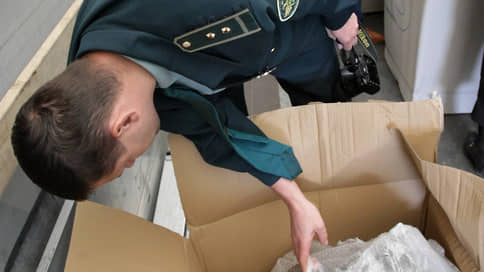The Federal Customs Service is experimenting with transparency
[ad_1]

The Federal Customs Service (FCS) is preparing for an experiment on customs monitoring that will start on April 3. By analogy with tax monitoring, companies – authorized economic operators and residents of industrial clusters – will open customs access to their goods accounting systems in exchange for the cancellation of on-site inspections without revealed violations. Experts note that an increase in the volume of information provided will require additional labor costs from businesses, but they believe that the innovation will get rid of the remnants of gray schemes in foreign trade and speed up the process of clearing goods.
Published government decree describes the parameters of the customs monitoring experiment for the period from April 3, 2023 to November 1, 2024. The “pilot” was supposed to take place last year, but its dates were shifted (see below). “Kommersant” June 28, 2022). Participants of the experiment on a voluntary basis will be authorized economic operators (AEOs) using the simplified cargo clearance procedure, as well as residents of industrial clusters. It is expected that upon completion of the experiment, such monitoring can be extended to all AEOs (there are now more than 200 of them).
The essence of the monitoring: participating companies provide the FCS with access to their goods accounting systems in order to compare the information contained there with information from customs declarations.
In return, participants in the experiment can count on a reduction in the number of on-site inspections (customs undertakes not to conduct on-site inspections without revealed violations) and a reduction in the cost of their support. Recall that a similar monitoring scheme has been operating in the tax sphere since 2013.
Now the FCS is testing information exchange – it will go through “data marts” into which companies will upload information and to which the customs authority will have free access, the service explained to Kommersant. Ensuring access to the goods accounting system is already one of the conditions for obtaining AEO status, but this procedure is determined in the agreement between the operator and customs. Now the agreement will be standard.
In contrast to the “closed” system for determining the degree of risk in the clearance of goods, the criteria for monitoring are transparent and determined by regulation.
In particular, this is a deviation of the average value of goods in the accounting system by more than 15% from the level of the customs value index for similar goods of the same country of origin or in relation to the average values for the previous quarter or year on year. Based on the results of the monitoring, the customs will prepare a conclusion. The participating company will have the opportunity to independently correct the violations or argue its position on the claims indicated in the conclusion. Otherwise, the participant will face control after the release of goods.
“During the experiment, the data array for exchange will increase significantly, as operators will share information about the end point of the sale of goods, the cost of products and other information from primary accounting documents, accounting registers. There are a lot of documents, so companies will need to allocate one or more employees to work with them,” Vadim Filatov, head of the Delovaya Rossiya transport logistics committee, notes. In his opinion, the pilot project will help the Federal Customs Service to develop a unified set of rules for the exchange of information on the supply with foreign economic activity participants, as well as eliminate the remaining gray schemes and strengthen control over the reliability of declarations.
Dmitry Purim, Chairman of the Board of Directors of Sovfrakht, believes that participation in the experiment can give companies an advantage in the speed of cargo clearance. At the same time, he advocates raising the threshold fixed in the conditions of the pilot for the deviation of the customs value from 15% to 20% – by analogy with the monitoring of the Federal Tax Service, in which the criterion of comparison with the market valuation of assets is applied.
[ad_2]
Source link






